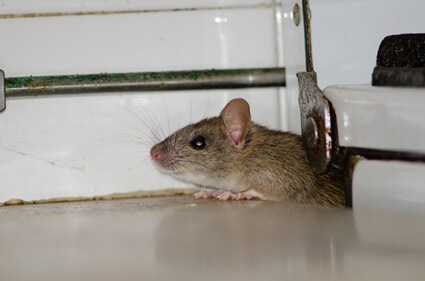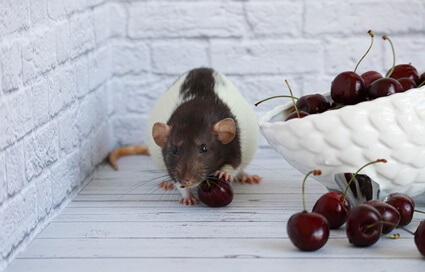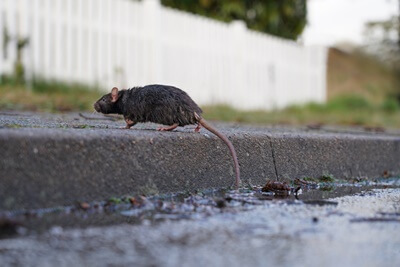Rats are clever animals capable of deduction and problem-solving. While their ability to make intelligent decisions is undisputable, many wonder if rats have a good memory.
Rats can recognize different places, people, and situations. When a rat sees a person it has encountered previously, it doesn’t remember them as a distinctive individual.
Instead, it recalls the stimulus experienced from prior encounters with that person. Rats can form memories of events, explaining why they can remember food and water sources.
They’re cognitively wired to make neural connections with objects and people after prolonged exposure, retaining a sense of familiarity even after the object or person is no longer in their environment.
Do Rats Have Good Memory?
Rats can remember other rats and people that they’ve encountered previously. Current Biology found that rats have episodic memory, which is the ability to learn, store, and recall information.
This pertains to unique personal experiences encountered in daily life. Episodic memory includes conscious memories about the time and place of an event and the details of how the event unfolded.
Episodic memory is a survival tool, allowing them to recall locations where they’ve foraged for resources in the past. In an experiment conducted, it was observed that rats could recall pathways that had been baited with food even days after their initial exposure.
Rats can recall odors they’ve encountered before, often returning to a favorable place.
Can Rats Have Associated Memories?
Rats are capable of experiencing familiarity and forming neural associations with objects and other creatures after prolonged exposure.
So, rats can recognize other rats, predators, and humans. Of course, a rat may not necessarily have a specific memory about an individual or object previously encountered. However, it’ll retain a sense of familiarity long after removing the exposure.
The ability to remember events from the past is crucial to a rat’s survival, enabling them to avoid dangerous situations. For instance, if a rat observes another rat getting caught or killed by a bait trap, it will store this experience in its memory.
When it encounters another baited trap in the future, the memory of the past event will be triggered, causing the rat to behave in self-preservative ways, such as avoiding the trap.

What Is The Memory Span of a Rat?
According to Current Biology, rats can remember many items in context using their episodic memory. The evidence suggests that rats can recall up to 32 items in context.
The episodic memory of rats could sustain up to 15 transitions between contexts. Also, the item-in-context memory of rats has been shown to survive a long retention interval challenge.
This suggests that rats can remember previous events long after exposure.
How Long Do Rats Remember?
According to the National Library of Medicine, rats remember information obtained after a 10-minute exposure for up to 25 minutes. Memories acquired after 1 minute of exposure decay in under 15 minutes.
We can deduce that rats have superb short-term memory. When exposed to insufficient memory availability, rats rely on directional preferences and familiar stimuli.
Do Rats Remember Where They Live?
Rats have impressive recollection abilities.
So, once they map out the location of their nest, they’ll remember all the routes for a long time. In most cases, rats return to the same nest after foraging for food, water, and nesting material.
Rats are territorial and will never forget their nests, seldom abandoning them.
How Far Do Rats Travel From Their Nests?
A rat’s distance from its nest depends on its location and proximity to resources, such as food and water. Rats will travel 300-500 feet in search of supplies.
However, they can travel further if the rats don’t find food as easily in their environment. Their episodic memory enables them to return to their nests after foraging, even in far-off locations.
Do Rats Remember Each Other?
Rats are often thought to be non-visual due to their poor visual acuity.
However, rats use visual information for social recognition. For instance, rats utilize visual information to discriminate emotional expressions, like fear and pain, from neutral expressions in other rats.
It’s unclear to what extent rats can recognize each other. Based on research by PLOS One on rats’ visual recognition, we can assume that rats can remember other rats.
Do Rats Remember Traps?
As mentioned, rats can form neural connections with objects in their environment and create memories of previous events.
So, a rat that survived getting caught or wounded in a trap will likely remember the trap. It’ll experience a visceral recollection of the event when it chances upon another trap.
Likewise, a rat that has observed another rat getting killed by a snap trap will remember the experience when it encounters a similar situation. As a result, it’ll be more cautious or avoid the trap entirely.
Can Rats Remember You?
Rats have a good memory and can recognize faces they’ve seen previously.
Rats form neural associations with people they’ve made contact with for an extended period. Thus, rats can experience a sense of familiarity upon encountering an individual they’ve encountered before.
Do Mice Have a Good Memory?
Mice possess a remarkable memory that’s linked to their sense of smell.
According to the University of Liverpool, female mice exposed to a pheromone in the urine of male mice repeatedly return to the site of exposure up to 14 days later.
The findings of this experiment reveal that female mice locate mates and competitors by remembering the exact location where they first encountered the pheromone darcin.
Similarly, male mice were observed to use olfactory memories to remember the location of rival mates.

Do Rats Have Working Memory?
Rats have a working memory, although it’s different from that of humans. Rats process information via independent memory systems, producing spatial and olfactory memories.
A study in Current Biology tested working memory in rats. The test rats were given initial training in odor tasks to provide a memory load in their olfactory memory system.
After the rats were introduced to the first odor over several daily sessions, they were presented with pairs of odors, one of which was new. Each time a rat selected the new odor, it was rewarded with a small piece of food, whereas picking out the old odor received no reward.
The same rat underwent spatial memory exercises, tasked with searching for a depleting food source in an eight-arm radial maze.
Once per day, each arm of the maze was baited. Each time the rat visited the arm, it ate food, while returning to a food-depleted site was deemed an error.
During the encoding phase, the rat chose from 4 randomly selected open doors and consumed the food at the end of each arm.
However, it was barred from accessing the other 4 closed doors. Nevertheless, at the end of the retention interval, all 8 doors were opened, and the rat could locate all the remaining 4 baits.
In a further experiment, researchers evaluated the effects of adding olfactory memory load on the spatial domain. The results showed that olfactory and spatial memory are resistant to interference from adding a memory load to either domain.
This means that rats have strong memories but struggle to combine their different types of memory.







